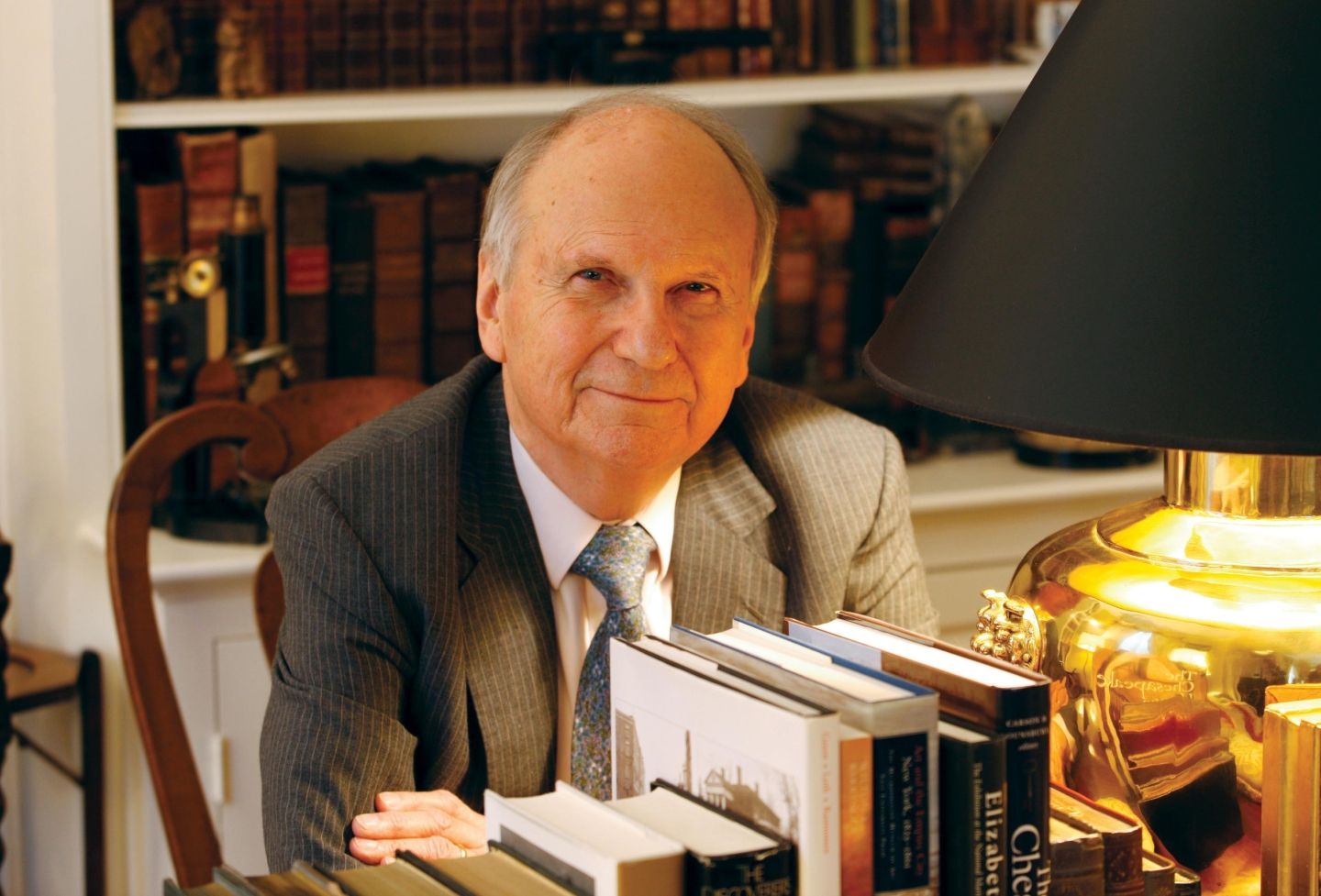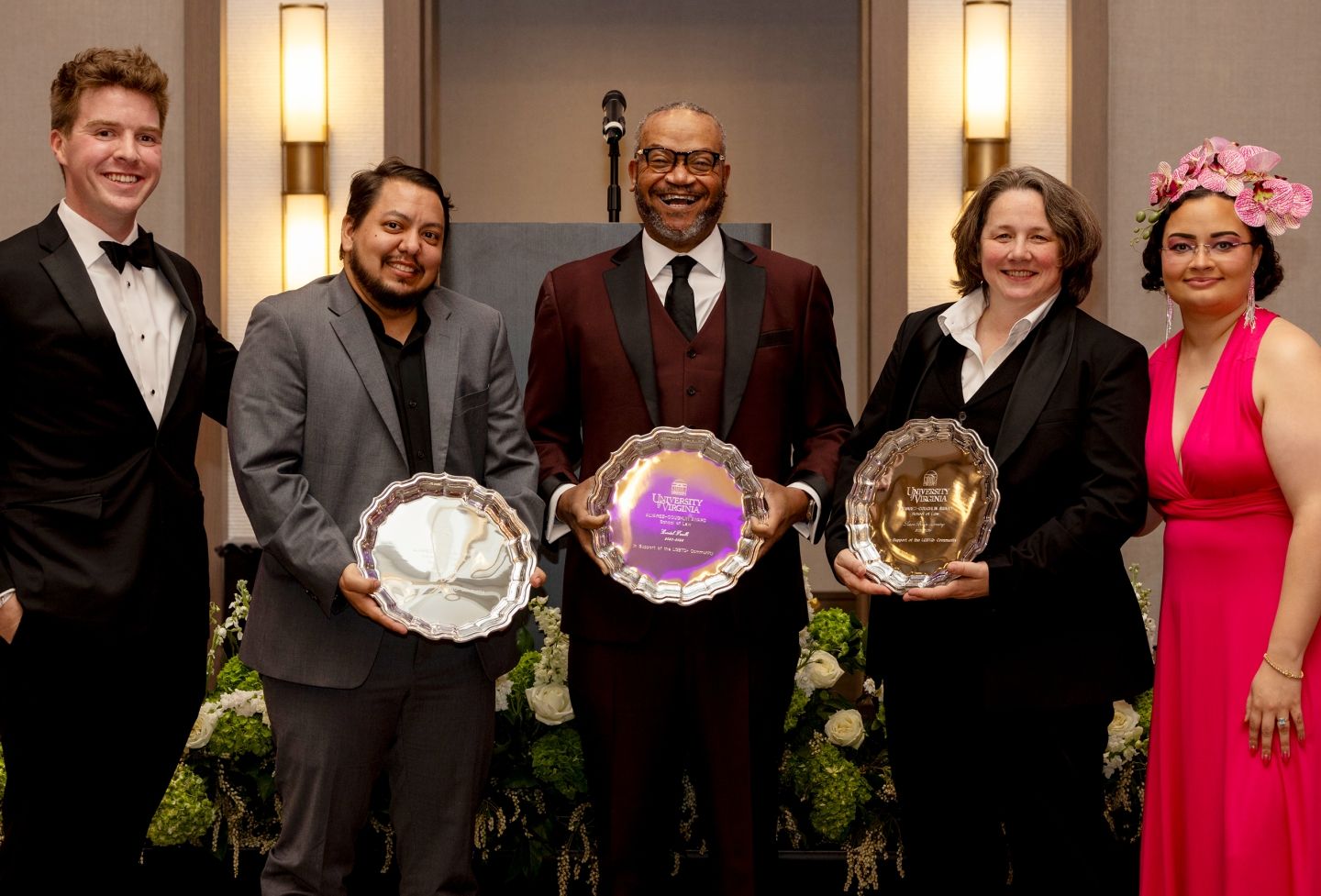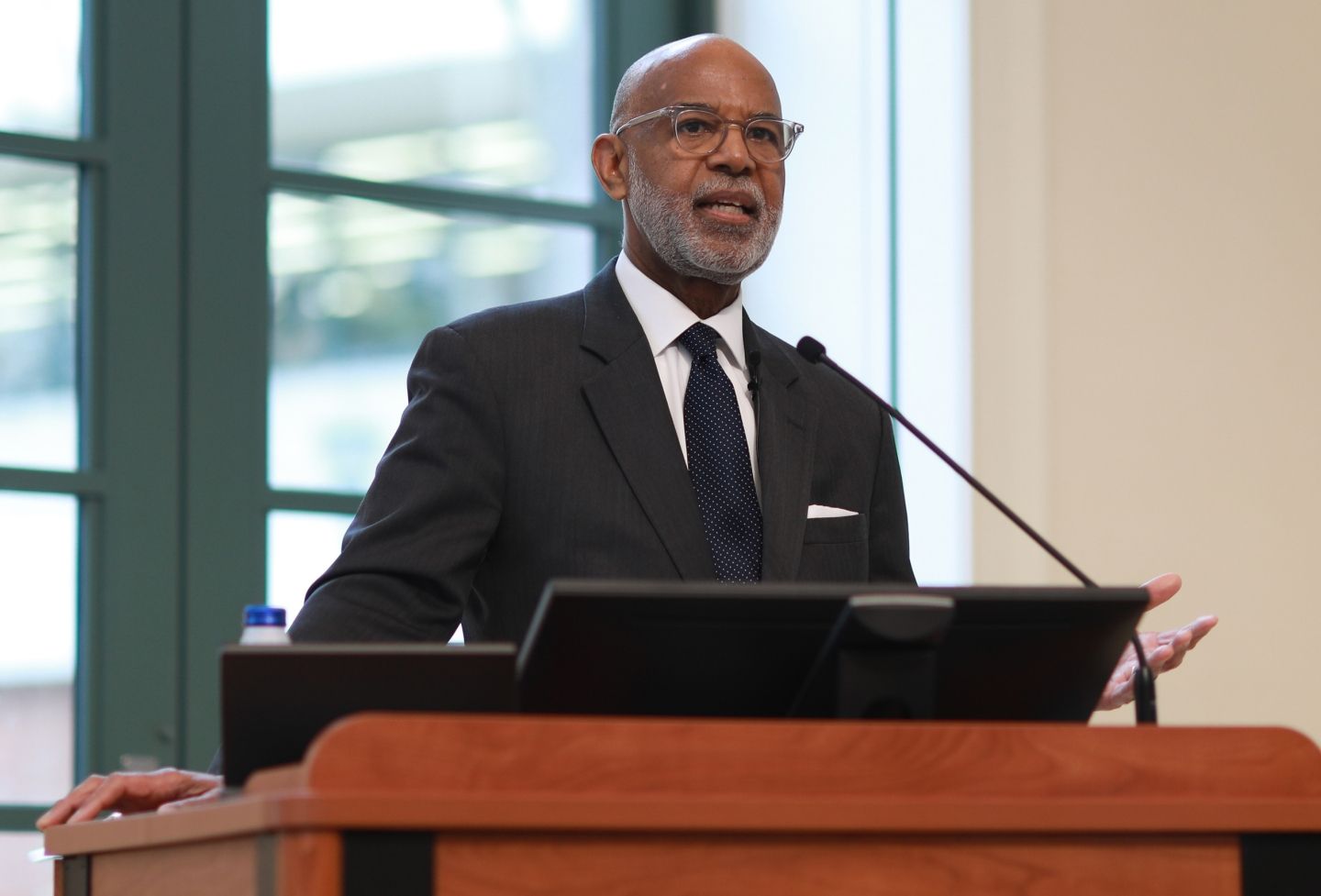Update: John Lowe died Oct. 15. In Memoriam
In the spring of 1969, Virginia Scott was 18 and preparing to graduate from Albemarle High School. She was also working as part-time clerical help for attorney John Lowe ’67. Stories in the local newspaper about his work on civil rights cases had inspired her to apply for a job in his Charlottesville office.
That collaboration would lead to a monumental event–full coeducation at the University of Virginia.
Their work together started, Lowe recalled, after Scott told him she was about to graduate with exceptional grades.
“Oh, I guess you will be going to Virginia then,” Lowe said.
“No,” Scott said. “Women aren’t allowed at Virginia.”
Lowe was surprised. He had attended law school with female students, who had been permitted to attend graduate programs on a limited basis since the 1890s, and the specialized programs of nursing and education since the 1920s and ’30s. But UVA still denied admittance to women wishing to pursue a broad undergraduate education.
“It shocked me. I said, ‘Well, then, we’ll just have to take care of that.’”
He tried to get an appointment to speak to the Board of Visitors to convince them the stance was inappropriate and unconstitutional. Lowe figured they would immediately see the error of their ways and change, “because this was Virginia, my beloved University.”
He was wrong. They would not give him an audience, so Lowe felt he had no other choice.
“I said, ‘OK, we’re going to file suit.’”
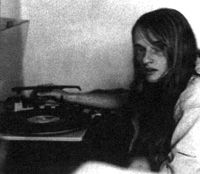
A Plan for Female Education
Thomas Jefferson founded the University to teach Southern gentlemen.
“A plan of female education has never been a subject of systematic contemplation with me,” he wrote in a letter to friend Thomas Burwell in 1818, the year after he, James Monroe and James Madison gathered for the ceremonial placing of UVA’s first cornerstone.
Over the years, women gradually became a small part of the student body, albeit in a piecemeal fashion. A 2003 UVA Library exhibit on women and the University said, “Over the course of the preceding century, women lived, studied, and worked at the University as professors’ family members, summer students, graduate students, and members of the University faculty, staff, and Board of Visitors.”
Elizabeth Tompkins became the first female School of Law graduate in 1923.
But there was no systematic way for women to apply to be undergraduate students.
In 1969, the year Scott graduated from high school and UVA celebrated its sesquicentennial, the Board of Visitors finally voted to grant women access to all parts of the University. It assigned the task of creating a transition map to then-Provost Frank Hereford and a coeducation committee. The plan: to gradually admit women to UVA over the span of 10 years and cap female enrollment at 35 percent in 1980.
Nonetheless, Lowe continued to prepare his lawsuit with his friend, lawyer Philip Hirschkop, who had gained fame as co-counsel for Mildred and Richard Loving in Loving v. Virginia, the landmark Supreme Court case that decriminalized interracial marriage. Both were private practitioners who were cooperating attorneys with the American Civil Liberties Union. In addition to Scott, the pair represented three other young women in the UVA case: Nancy Jaffe, Nancy Anderson and Jo Anne Kirstein.
In their complaint, filed in Richmond federal court in 1969, the plaintiffs said the University “severely discriminates against women in their admissions policies.” They appealed for a change in those policies to allow women to enter the College of Arts & Sciences.
David and Goliath
After graduating from UVA Law, Lowe went to work for the accomplished James Harry Michael Jr.’42 (who would become a state senator in 1968 and, in 1980, a federal judge). Michael was so impressed with Lowe’s work that he asked him to become a partner in his Charlottesville practice. But the young lawyer wanted to “hang his own shingle,” so he left that law firm and set up his solo practice in town. The two would meet again under very unusual circumstances.
UVA hired Michael as special counsel in the coeducation lawsuit. “It’s like a class-C movie plot,” Lowe said. “The University hired Harry Michael, so it’s David and Goliath; it’s the mentor and the protégé.”
The two well-acquainted attorneys squared off in Richmond’s federal court before Judge Robert Merhige LL.M. ’82, who offered pivotal rulings in other landmark cases including the integration of Virginia’s public schools.
One of Lowe’s expert witnesses was Kate Millett, then dean of Barnard College, which had recently instituted coeducational dorms.
“At one of the hearings, the question was posed by Senator Michael: ‘Isn’t it true, you have all these men’s bathrooms on the Grounds of the University? You don’t have any women’s bathrooms. How do you work that out?’”
Millett’s response brought down the house. “Kate said, ‘Oh, shucks, Senator, all you do is plant geraniums in the urinals and you’ve got a women’s bathroom,’” Lowe recalled with a chuckle.
Witnesses for the University included an expert who said coeducation would not work because women needed more diminutive furniture.
Minority Report, Major Break
In the course of the lawsuit, Lowe asked for a preliminary injunction so Scott could enroll at UVA in 1969 and not lose a year of school while the case was pending.
The day before the preliminary injunction hearing, Michael sent Lowe an exhibit he was planning to enter into evidence. It was identified to Lowe as the report from Hereford’s Coeducation Committee.
“It said that coeducation ‘might’ work,” Lowe said. “‘Might’ was the word. It might be feasible to add up to 35 percent of women to the entering class over a period of 10 years–and that was only ‘might.’”
Then a twist turned the case on its head.
About 10 p.m. on the spring evening before the scheduled hearing, Lowe, a bachelor living in an apartment on Jefferson Park Avenue, got a phone call. It was a representative to Student Council, Kevin Mannix ’74. Then a rising third-year undergraduate student, he was also the student representative on Hereford’s Coeducation Committee. He wanted to know if his minority report had been attached to the University’s majority report on coeducation.
“No,” Lowe said.
“I didn’t think it would be,” Mannix told him. “I’ll bring it over.’”
“I wrote the minority report because I could not subscribe to the position that the committee was taking on coeducation,” Mannix recalled. “It was a quota system. I guess in my naiveté, I thought it would be included in the record. I don’t know what happened. I don’t want to speculate, but somehow it was not provided to John.”
(Mannix went on to marry his wife, Susana, who enrolled at UVA in 1970 as a result of Lowe’s case.)
The next day in court, Michael introduced the majority report into evidence as the Report of the University’s Coeducation Committee.
Lowe offered no objection.
Merhige sensed something was off.
“Judge Merhige knew me pretty well and he could see by my facial expression that something was wrong,” Lowe said. “He was really watching me carefully.”
On cross-examination, Lowe handed Mannix’s report to Hereford.
“I said, ‘Mr. Hereford, I hand you this document. May I ask you if you know what it is?’”
Lowe said Hereford looked at the report and blanched. “He said, ‘Yes, I do know what it is.’
“Can you tell Judge Merhige what that is?” Lowe continued.
“This is Mr. Mannix’s minority report,” Hereford responded.
Lowe asked, “Is that part of the report of the coeducation committee?”
Hereford replied that it was.
At that point, the judge knew exactly what was going on, Lowe said. “He got beet-red and furious on the bench. He knew important evidence had been withheld from the court.”
“I offer that in evidence,” Lowe told the judge, who immediately went into recess to read the new material.
After coming out of chambers, Merhige granted the temporary injunction and Scott entered UVA later that year on the stipulation that if Lowe eventually lost the case, she would not earn any course credit. The other three women opted not to enroll.
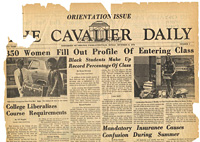
A ‘Black Eye’ Averted
Because the overall coeducation lawsuit was a challenge to the constitutionality of a state statute, it was assigned to a three-judge court. With the narrow issue of the preliminary injunction resolved by Merhige, the legal teams for the plaintiff and the defendant gathered in a federal courtroom in Richmond to continue the case. They were called into chambers by the judges: Merhige, John MacKenzie and James Craven.
“When they got us in there, Judge MacKenzie said the reason they had called the teams in is because they thought the University was going to get a very black eye out of this matter if it went the wrong way,” Lowe said. Michael quickly moved for a continuance, effectively putting the trial on hold so he could go back to the Board of Visitors to see if the matter could be resolved.
About a week later, the board went into a special meeting and came out with a voluntary acceptance of full coeducation within three years on the terms Lowe’s suit had proposed: admitting 450 women to the College in 1970 and 550 in 1971. In 1972, students were considered for admission to UVA without regard to gender.
Scott was 19 when she enrolled at UVA. She graduated in 1973 with a degree in religious studies. She later earned master’s degrees in religious studies and education from the University.
“I feel fortunate to have had the opportunity to be a part of this suit and to watch it unfold,” she said. “I am grateful for the outcome which enabled me to receive an education that enriched my life across many dimensions. All women who were able to attend UVA after the case was resolved are indebted to John for taking this case and so skillfully achieving a positive outcome for us all.”
Scott said watching Lowe work on this case and others was an inspiration and a valuable learning experience.
“He was brilliant, fearless and totally dedicated to equal rights cases, regardless of how unpopular it made him,” she said. “He was just getting his own practice going, but that didn’t stop him from spending most of his time on cases that brought little or no revenue.”
Lowe is 80 and still practicing trial law full-time in Bethesda, Maryland, with most of his practice in Virginia jurisdictions.
“One of the things that comes out of this, I hope, is to inspire young lawyers who may think they don’t have much power,” he said. “As long as you’ve got the opportunity to go to court for somebody, you’ve got a lot of power. Neither Phil nor I received any fee for handling this matter. It was a pro bono-publico case—for the public good. This will hopefully give other lawyers courage and inspiration to do good things on a pro-bono basis.”
Today, as of this school year, women make up 56 percent of the incoming class and come from 47 states and 72 countries.
Founded in 1819, the University of Virginia School of Law is the second-oldest continuously operating law school in the nation. Consistently ranked among the top law schools, Virginia is a world-renowned training ground for distinguished lawyers and public servants, instilling in them a commitment to leadership, integrity and community service.

